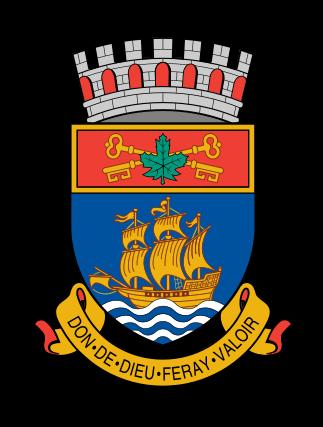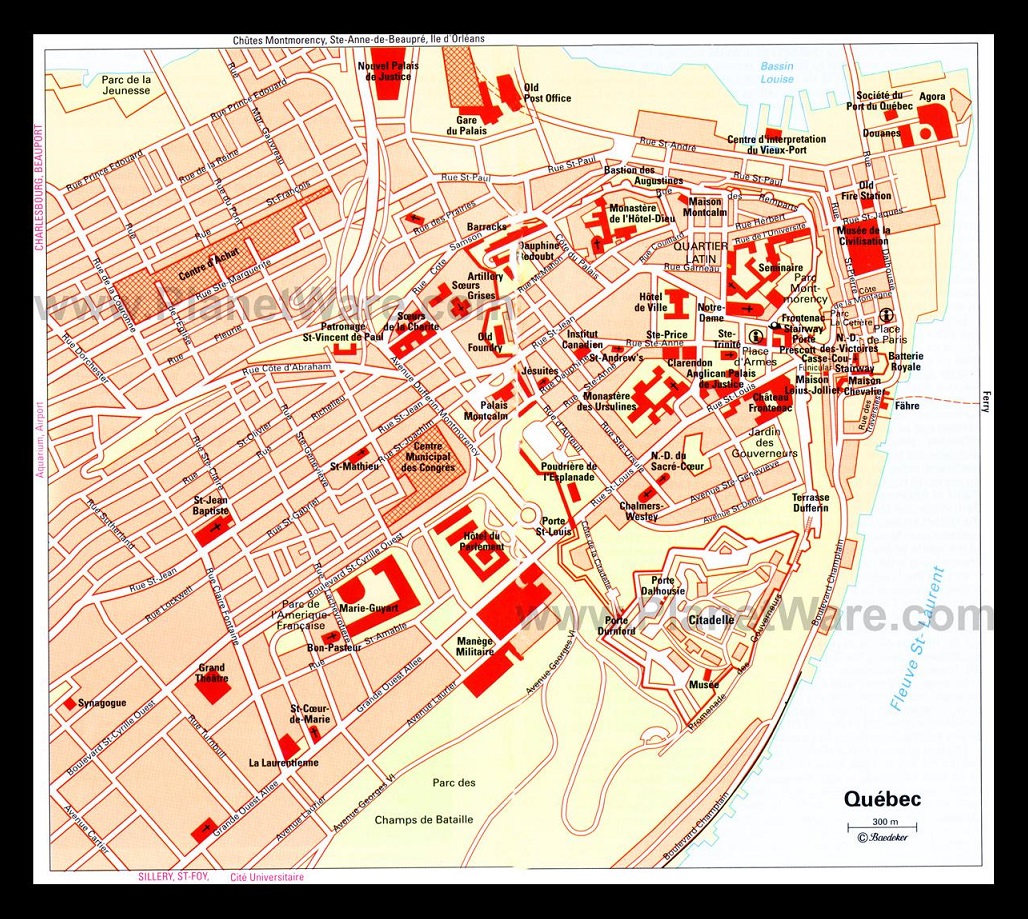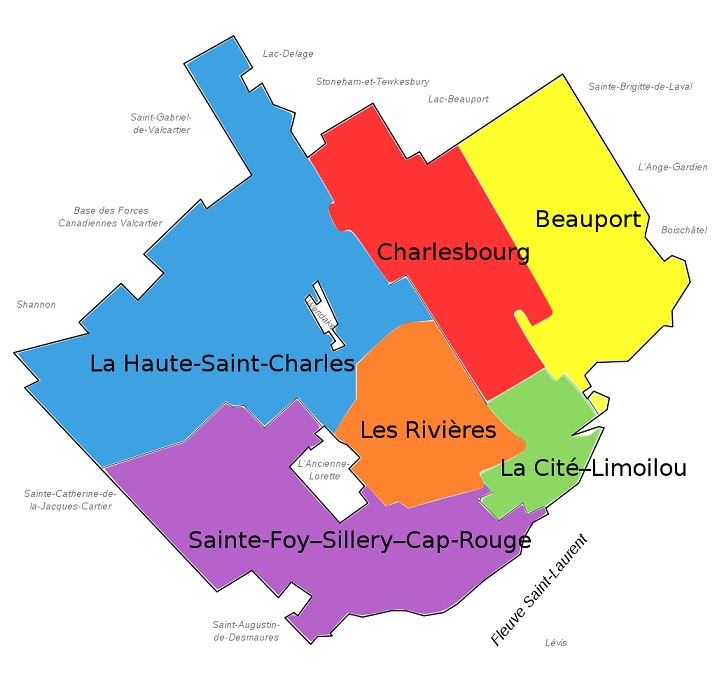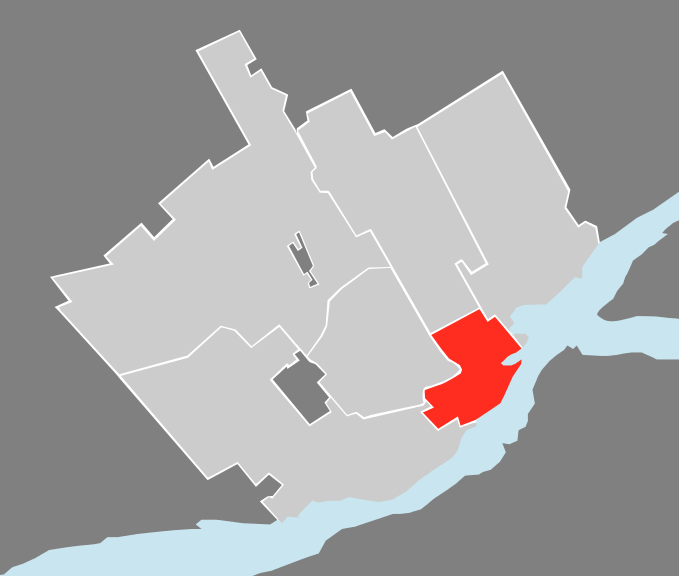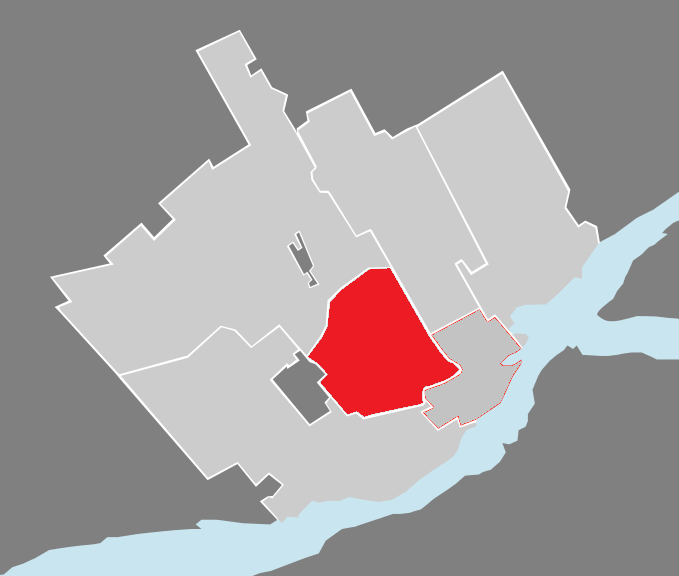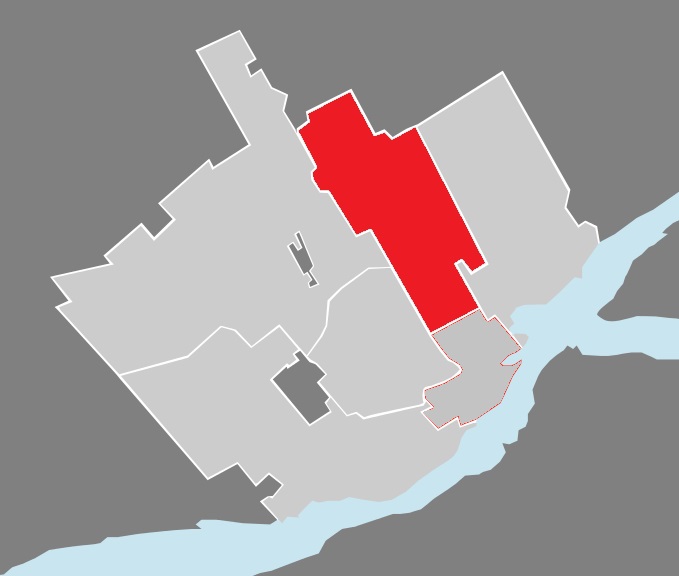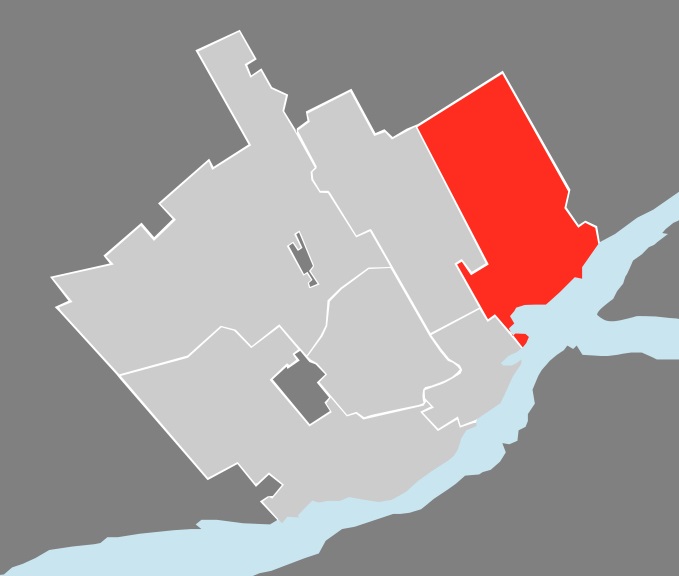Difference between revisions of "Quebec City"
(→Gouvernement) |
|||
| Line 23: | Line 23: | ||
== '''Gouvernement''' == | == '''Gouvernement''' == | ||
| + | [[]] | ||
| + | <br> | ||
| + | <br> | ||
* -- [[National Assembly of Quebec]] -- Previously the provincial legislature, now the national legislature of Free Quebec. (Vieux-Québec) | * -- [[National Assembly of Quebec]] -- Previously the provincial legislature, now the national legislature of Free Quebec. (Vieux-Québec) | ||
<br> | <br> | ||
Revision as of 12:02, 28 April 2015
- La République du Québec -x- Montreal -x- Toronto -x- League of the Night
Contents
- 1 Apparence
- 2 Blason
- 3 Climat
- 4 Économie
- 5 Gouvernement
- 6 Géologie
- 7 Histoire
- 8 Emplacement
- 9 Population
- 10 Arenas
- 11 Attractions
- 12 Bars et Clubs
- 13 Cimetières
- 14 Commerces (shops)
- 15 Couvents et Monastères
- 16 Crime
- 17 Les Citoyens de la Ville de Québec (Court House)
- 18 Civil Servants
- 19 Les événements actuels (current events)
- 20 Festivals
- 21 Fortifications
- 22 Galeries
- 23 Hôpitaux
- 24 Hôtels
- 25 Les Supermarchés
- 26 Points de Repère
- 27 Cartes de la Ville
- 28 Médiatique (mass media)
- 29 Monuments Locaux
- 30 Musées
- 31 Quartiers - Arrondissements
- 32 Parcs de la Ville
- 33 Résidences Privées (private residences of note)
- 34 Restaurants
- 35 Ruines
- 36 Écoles
- 37 Sociétés (majeur) et les Entreprises (mineur) (corporations)
- 38 Théâtres
- 39 Transport
- 40 Une Terre Sainte (holy ground)
- 41 Les Messes Mortels (the mortal masses)
- 42 Les gens féeriques et les alleux du Québec (The Fairy People and the Freeholds of Quebec)
- 43 Les Loups-Garous et leurs Terres Sacrées (The Werewolves and their Sacred Lands)
- 44 Le Umbra et sa Couvée (The Umbra and its Brood)
- 45 La Pègre et ses Morts sans Repos (The Underworld and the Restless Dead)
- 46 Les Vampires de la Ville de Québec
- 47 Ceux qui ont succombé à la mort finale
- 48 Websites
Apparence
Blason
Climat
The climate of Quebec City is classified as humid continental and experiences four distinct seasons.
Summers are warm and occasionally hot, with periods of hotter temperatures which compounded with the high humidity, create a high heat index that belie the average high of 22–25 °C (72–77 °F) and lows of 11–13 °C (52–55 °F).
Winters are often cold, windy and snowy with average high temperatures -5 to -8 °C (23 to 18 °F) and lows -13 to -18 °C (9 to -0 °F). Spring and Fall, although short, brings chilly to warm temperatures. Late heat waves as well as "Indian summers" are a common occurrence.
On average, Quebec City receives 1,230 millimetres (48.43 in) of precipitation, of which 924 millimetres (36.38 in) is rain and 307 millimetres (12.09 in) is the melt from 316 centimetres (124.4 in) of snowfall per annum.
The city experiences around 1,905 hours of sunshine annually or 41% of possible sunshine, with summer being the sunniest, but also slightly the wettest season. During winter, snow stays on ground from about December to April.
Économie
Gouvernement
[[]]
- -- National Assembly of Quebec -- Previously the provincial legislature, now the national legislature of Free Quebec. (Vieux-Québec)
Géologie
Histoire
Emplacement
Population
- -- City (516,622) - 2011 census
- -- Urban (696,946) - 2011 census
- -- Metro Area (765,706) - 2011 census
Arenas
Attractions
- -- Anglican Palais de Justice (Quebec City)
- -- Bastion des Agustines (Quebec City)
- -- Centre d'interpretation du Vieux-Port (Quebec City)
- -- Chalmers-Wesley (Quebec City)
- -- Clarendon (Quebec City)
- -- Domaine de Maizerets (Quebec City)
- -- Douanes (Quebec City)
- -- Fahre (Quebec City)
- -- Ferry (Quebec City)
- -- Frontenac (Quebec City)
- -- Funicular (Quebec City)
- -- Hotel de Ville (Quebec City)
- -- Jesuites (Quebec City)
- -- Maison Loius-Jolliet (Quebec City)
- -- Maison Montcalm (Quebec City)
- -- Monastere de l'Hotel-Dieu (Quebec City)
- -- Monastere des Ursulines (Quebec City)
- -- Notre Dame du Sacre-Coeur (Quebec City)
- -- Old Fire Station (Quebec City)
- -- Old Post Office (Quebec City)
- -- Parc La Cetiere (Quebec City)
- -- Parc Montmorency (Quebec City)
- -- Place de Paris (Quebec City)
- -- Porte Prescott (Quebec City)
- -- Porte St-Louis (Quebec City)
- -- Poudriere de l'Esplanade (Quebec City)
- -- Societe du Port du Quebec (Quebec City)
- -- St-Andrews (Quebec City)
- -- Stairway (Quebec City)
- -- Ste-Price (Quebec City)
- -- Ste-Trinite (Quebec City)
- -- Airport (Quebec City)
- -- Artillery (Quebec City)
- -- Barracks (Quebec City)
- -- Beauport (Quebec City)
- -- Centre d'Achat (Quebec City)
- -- Centre Municipal des Congres (Quebec City)
- -- Hotel du Parlement (Quebec City)
- -- Ille d'Orleans (Quebec City)*
- -- Institut Canadien (Quebec City)
- -- Nouvel Palais de Justice (Quebec City)
- -- Old Foundry (Quebec City)
- -- Palais Montcalm (Quebec City)
- -- Parc de la Jeunesse (Quebec City)
- -- Patronage St-Vincent de Paul (Quebec City)
- -- Soeurs de la Charite (Quebec City)
- -- Soeurs Grises (Quebec City)
- -- St-Jean Baptiste (Quebec City)
- -- St-Mathieu (Quebec City)
- -- Bon-Pasteur (Quebec City)
- -- Cite Universitaire (Quebec City)
- -- La Laurentienne (Quebec City)
- -- Manege Militaire (Quebec City)
- -- Marie-Guyart (Quebec City)
- -- Parc de l'Amerique-Francaise (Quebec City)
- -- Parc des Champs de Bataille (Quebec City)
- -- Séminaire du Québec (The Jesuit Seminary of Quebec City)
- -- St Coeur de Marie (Quebec City)
- -- St-Foy (Quebec City)
- -- Synagogue (Quebec City)
- -- Musée de la Civilisation (Museum of Civilization of Quebec City)
- -- Porte Dalhousie (Quebec City)
- -- Porte Durnford (Quebec City)
- -- Vieux Port (The Old Port of Quebec City)
- -- Yacht-Club de Québec (Quebec City)
Bars et Clubs
- -- Le Sacrilege (The Sacrilege)
- -- L'oiseau Noir (The Black Bird)
Cimetières
- -- Côte de la Montagne Cemetery -- Old Québec
- -- Notre-Dame-de-Québec Basilica-Cathedral - active crypt
- -- Hôpital-Général de Québec Cemetery -- Former military cemetery
- -- Indian Cemetery -- Native American cemetery
- -- Beth Israel Cemetery -- Jewish graveyard
- -- St. Matthew’s Cemetery
- -- Saint-Pierre-de-l'Île-d'Orléans - cemetery near Quebec City
- -- Grosse-Île National Historic Site -- former quarantine station and Irish graveyard
- -- Mount Hermon Cemetery
- -- Saint-Charles Cemetery
- -- St.Patrick's Cemetery
- -- Dr. Pierre Leclerc -- ghoul mortician
http://www.quebecregion.com/en/quebec-city-and-area/cemeteries-of-quebec-city
Commerces (shops)
Couvents et Monastères
- -- Ursuline Convent of Quebec City -- Established 1639.
Crime
Les Citoyens de la Ville de Québec (Court House)
File:Hôtel de ville de Québec.jpg
Civil Servants
- -- Rodolphe Voclain -- Former Mayor of Quebec City (deceased -- October 3rd, 2022)
- -- Quebec City Council -- There are 35 city council members.
- -- Inspector Apollinaire Lefurgey - Quebec police inspector
- -- Dr. Marcellin Fabre -- night shift coroner
- -- Joachim Leclair -- coroner's assistant
- -- The Québec City Council
Les événements actuels (current events)
Festivals
Fortifications
- -- Dauphine Redoubt (Quebec City) -- Artillery Park
- -- Ramparts of Quebec City -- Vieux-Québec / Old Québec -- Originally built in 1694.
Galeries
Hôpitaux
- -- Hôpital Laval
- -- Hôtel-Dieu de Québec -- (established 1637)
- -- Institut universitaire en santé mentale de Québec
Hôtels
- -- Château Frontenac -- The Tremere Chantry
- -- Le Hotel de Glace -- A winter only attraction.
- -- Hôtel Pur -- A hotel in the heart of downtown Quebec City, a few blocks north of le Universite du Quebec. It caters to business travellers.
Les Supermarchés
Points de Repère
Cartes de la Ville
Médiatique (mass media)
- -- Le Journal de Québec (Francophone Daily Newspaper)
- -- Le Soleil de Quebec (The Quebec Sun -- A Francophone Daily Newspaper)
- -- Quebec Scope Magazine (arts & culture monthly)
- -- Quebec Chronicle Telegraph (Anglophone Weekly Newspaper)
Monuments Locaux
- -- Citadelle of Quebec -- The Duke's domain.
Musées
- -- Musée de la Civilisation (Museum of Civilization) (Vieux-Québec)
- -- Musée national des beaux-arts du Québec (National Museum of Fine Arts of Quebec) (Vieux-Québec)
Quartiers - Arrondissements
Boroughs and Districts
On 1 January 2002, the 12 former towns of Sainte-Foy, Beauport, Charlesbourg, Sillery, Loretteville, Val-Bélair, Cap-Rouge, Saint-Émile, Vanier, L'Ancienne-Lorette, Saint-Augustin-de-Desmaures and Lac-Saint-Charles were annexed by Quebec City. This was one of several municipal mergers which took place across Quebec on that date. Following a demerger referendum, L'Ancienne-Lorette and Saint-Augustin-de-Desmaures were reconstituted as separate municipalities on 1 January 2006, but the other former municipalities remain part of Quebec City. On 1 November 2009, the Quebec City re-organized its boroughs, reducing the number from 8 to 6.
As of 2011 Quebec City has 35 districts in six boroughs. All districts are numbered, and most are named. In most cases the name of the district is similar to a historical town or village it replaced, but not always. Districts each elect their own council, which are part of public consultations with the city government. The numbering system was based on the 2002-2009 borough boundaries, so post-2009 the numbers do not correspond completely with the boroughs.
http://local.fiatlux.tk/quebec/quartiers
La Cité-Limoilou - Quebec City
Introduction
La Cité-Limoilou is the central borough of Quebec City, the oldest (in terms of architecture), and the most populous, comprising 21.85% of the city's total population. As an administrative division, it is very new, having only been formed on November 1, 2009, from the former boroughs of La Cité and Limoilou; now La Cité-Limoilou.

Districts of La Cité
La Cité ("the city" or "the stronghold") is the historic heart of Quebec City. It was the entirety of the city until the nineteenth century expansions and amalgamations. The former borough was divided into six different districts before the 2009 reorganization. The central district of La Cité is Vieux-Québec—Cap-Blanc—colline Parlementaire. It is in turn centred on the old walled city, Old Quebec, and also includes nearby Parliament Hill, the Old Port, and the Petit Champlain shopping district. Other districts within La Cité are also home to much historic architecture and many important institutions.
- -- <<Vieux-Québec–Cap-Blanc–colline Parlementaire>>
- -- <<Saint-Roch - Quebec City>>
- -- <<Saint-Jean-Baptiste - Quebec City>>
- -- <<Montcalm - Quebec City>>
- -- <<Saint-Sauveur - Quebec City>>
- -- <<Saint-Sacrement - Quebec City>>
- -- Quartier Petit-Champlain
Districts of Limoilou
Limoilou is a former borough of Quebec City. Population (2001): 44,980. It consisted of the neighbourhoods of Vieux-Limoilou, Lairet and Maizerets. It is bordered by the borough of Beauport in the northeast, by the borough of Charlesbourg in the northwest, by the borough of Les Rivières in the southwest, and in bordered in the south of the former downtown borough of La Cité (now also part of La Cité-Limoilou). In terms of architecture, Limoilou is second only to La Cité as Quebec City's oldest neighbourhood. It is also Quebec City's second most densely populated borough, with 4,656 inhabitants/km². A defining characteristic of the neighbourhood is its grid pattern layout, and the numerical naming of its streets, such as 11th Street and 3rd Avenue.
History: The first recorded instance of the name "Limoilou" to designate this former municipality occurred in 1893. It is a variant of the word Limoëlou, the name of 16th century French explorer Jacques Cartier's manor in Saint-Malo, Brittany, France.
Up until the end of the 19th century, the territory of Limoilou was entirely rural. First the settlements of Stadacona and Hedleyville appeared along the shore of the Saint-Charles River. Originally a separate municipality, it was incorporated into Quebec City in 1909 with which came larger, more urban projects.
- -- <<Vieux-Limoilou>>
- -- <<Lairet>>
- -- <<Maizerets>>
Les Rivières
Introduction
Les Rivières (The Rivers) is a borough of Quebec City. It comprises 5 neighbourhoods: Neufchâtel-Est, Lebourgneuf, Duberger, Les Saules and Vanier. Except for Vanier, all of theses neighbourhoods were part of the pre-2002 city of Quebec.
Description
Les Rivières is one of the six boroughs of Quebec City. It takes its name from the Saint-Charles River that passes through the borough as well as two tributaries rivers of Saint-Charles: Berger and Lorette. The borough is geographically located in the center of Quebec City.
Les Rivières borough vastly corresponds to the Rivières section of the former city of Québec (Québec City as it was know before the 2002 municipal reorganization). The borough also include the former city of Vanier which was merged into Quebec City in 2002.
The Rivières section of the former city was made of four municipalities that were annexed to Quebec City in the 1970s. They were Duberger, Les Saules, Neufchâtel and Charlesbourg-Ouest. These former municipalities kept their respective name as neighborhoods of Quebec City with the exception of Charlesbourg-Ouest which was renamed Lebourgneuf. Lebourgneuf got its name as a portmanteau from the last letters of Charlesbourg and the first letters Neufchatel because Charlesbourg-Ouest was located between Charlesbourg and Neufchâtel.
Following the creation of the new city of Quebec in 2002, Neufchâtel was dismantled, with most of it going to La Haute-Saint-Charles borough. The part of Neufchâtel that was retained by Les Rivières borough became Neufchâtel-Est.
Sainte-Foy–Sillery–Cap-Rouge
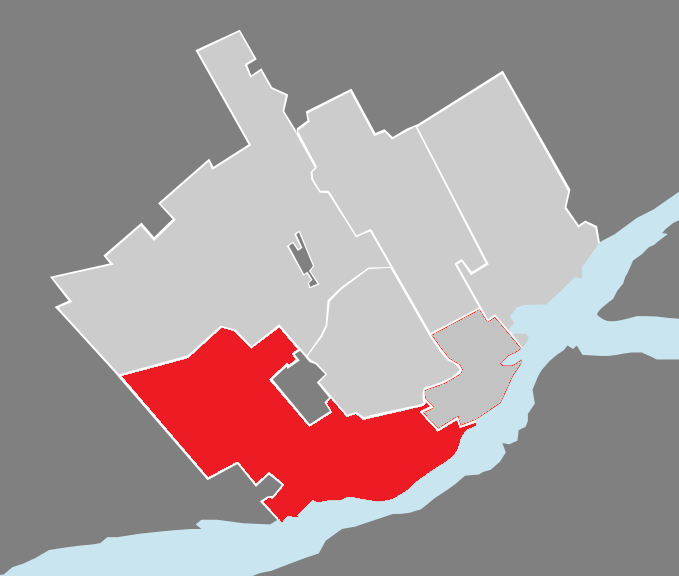
Sainte-Foy–Sillery–Cap-Rouge is a borough of Quebec City.
The borough was created on November 1, 2009, from the former borough of Sainte-Foy–Sillery and part of the former borough of Laurentien. Those boroughs in turn had been created on January 1, 2002; on that date, the former city of Cap-Rouge, a small part of the former city of Sainte-Foy, and other territory went into Laurentien, while the former city of Sillery and the rest of Sainte-Foy formed Sainte-Foy–Sillery.
Charlesbourg
Introduction
Founded in 1659, Charlesbourg is a borough of Quebec City, in the northeastern part of the city and West of the borough of Beauport. Incorporated in 1976 following the merger of the cities of Orsainville, Notre-Dame-des-Laurentides, the town of Charlesbourg (1949) and the municipality of Charlesbourg-Est (1928). It became part of Quebec City on January 1, 2002 after a controversial province-wide city merger project.
This residential suburb of Quebec City is the fourth-largest urban centre of the Québec Urban Community. Like Beauport, it has increased by more than 20,000 people over the last 25 years.
History
The first settlement of Charlesbourg dates back to the 1660s when the Jesuits organized the nucleus of a colony in a place known as the Trait Carré, meaning "perpendicular." The name Charlesbourg originates from this time from a chapel built at Bourg-Royal, in honour of St Charles Borromée. The village site at the Trait-Carré had a rather characteristic triangular parcelling-out of the land radiating outwards from a central square, in the centre of which the church was located. The land allotted to every tenant would fan out from that point in an isosceles triangular shape away from the town square. In this way, the farmhouses would all be situated close to the town centre, making it easy for everyone to help out and to participate in community-oriented tasks and festivities while being in a position to defend the village against attacks.
This geographical and architectural trademark of Old Charlesbourg, recognized as a provincial historic site (1965), is well worth a visit by enthusiasts of cultural geography and architectural heritage. There are only two examples of this kind of settlement layout in all of Canada: Charlesbourg and Bourg-Royal. Charlesbourg is rich in architectural landmarks: the church, built between 1827-33; the Jesuits grist mill and 15 other houses dating back to the pre-1830 period; and about 40 other buildings typical of the second half of the 19th century.
Beauport
Introduction
Beauport is a borough of Quebec City, Quebec, Canada on the Saint Lawrence River.
Beauport is a northeastern suburb of Quebec City. Manufacturers include paint, construction materials, printers, and hospital supplies. Food transportation is important to the economy. Attractions include Parc de la Chute-Montmorency (Montmorency Falls Park), which contains a fortification built in 1759 by James Wolfe and Manoir Montmorency, the home from 1791 to 1794 of Prince Edward, Duke of Kent and Strathearn.
The city's historic district contains many interesting churches and homes, including Bélanger-Girardin House, a National Historic Site of Canada where visitors can learn about Beauport's heritage. Annual events include the spring arts festival Salon de Mai and the summer Festival Folklorique des enfants du monde, a multicultural and international children's folklore festival.
History
Beauport was established in 1634, making it one of the oldest European-founded communities in Canada.
An Internment camp was set up at The Armoury in Beauport, Quebec from December 1914 to June 1916.
It was incorporated as a city in 1976 through the amalgamation of seven municipalities (Beauport, Saint-Michel-Archange, Giffard, Villeneuve, Montmorency, Courville and Sainte-Thérèse-de-Lisieux). During the 1990s its population continued to grow because of its economic diversification, available space, and outdoor recreational opportunities. On January 1, 2002, Beauport was merged into Quebec City.
Districts
http://en.wikipedia.org/wiki/Beauport,_Quebec_City
La Haute-Saint-Charles
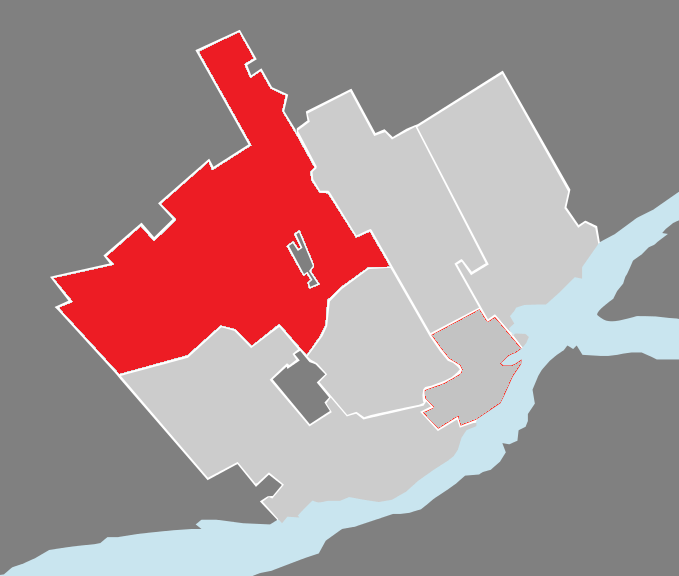
La Haute-Saint-Charles is a borough of Quebec City. Population (2006): 74,070. It comprises Lac-Saint-Charles, Saint-Émile, Neufchâtel, Loretteville and Val-Bélair.
Parcs de la Ville
- -- Aquarium du Québec
- -- Beauport Bay
- -- Cartier-Brébeuf National Historic Site
- -- La Promenade Samuel-De Champlain
- -- Parc of the Kabir Kouba Cliff and Waterfall
- -- Parliament Hill (Quebec City)
- -- Plains of Abraham
- -- The Battlefields Park
- -- Victoria Park
Résidences Privées (private residences of note)
Restaurants
Ruines
Écoles
- -- Laval University of Quebec City
- -- Universite du Quebec -- (Jamie's New Domain)
Sociétés (majeur) et les Entreprises (mineur) (corporations)
- -- NuTech Research Campus -- South side of the St. Lawrence River.
- -- Saint Lawrence Automotive Corporation (Electric Car Factory)
- -- The Quebec Historical Society -- Owns and maintains several historical sites in and around Quebec City.
Théâtres
Transport
- -- Gare du Palais (Palace Station) -- The main train station in Q-City.
Une Terre Sainte (holy ground)
- -- Notre-Dame-des-Victoires -- Construction began in 1687 and was completed in 1723.
- -- Séminaire de Québec -- (established 1663)
- -- Église Saint-Roch - the "Second Most Impressive Church in the Quebec Region"
Les Messes Mortels (the mortal masses)
- -- <<Ariella Ansel>> -- Lieutenant of the Ministry for the Interior (FAS Diplomat)
- -- <<Sylvianne Bellerose>> -- Pentex Subversive
Les gens féeriques et les alleux du Québec (The Fairy People and the Freeholds of Quebec)
Les Loups-Garous et leurs Terres Sacrées (The Werewolves and their Sacred Lands)
Le Umbra et sa Couvée (The Umbra and its Brood)
- -- Big Ben -- The temporal spirit in the old train station.
La Pègre et ses Morts sans Repos (The Underworld and the Restless Dead)
- -- Charline 'Charley' Eccleston -- A centuries dead mother in search of a centuries lost child.
- -- Mélissa Lachance -- A young woman tortured for three days and then murdered and eaten by her beloved boyfriend.
- -- Dominique: Wraith who does some business with Calogero Giovanni.
Les Vampires de la Ville de Québec
League of the Night Leadership
- -- Nasr Ramanathan - Duke of Quebec
- -- Qadir Al - Asmai -- (Torper) - under protection of Nasr
- -- Eldred Morce -- The yet-to-be-released grand-childe of the Duke.
- -- Michael Keets - Seneschal of Quebec City
- -- Madame Mina -- Courtier of Seneschal
League of the Night Counts and Their vassels
- -- Lydie Séverin - Count of Underworld and Street
- -- Chou Shizuka (蝶静香) -- Lord under Count of Underworld
- -- Zhi Chen Jiang (志辰江) -- Lord under Count of the Street
- -- Ezmeralda the Gadfly -- Courtier under Count of the Underworld
- -- Elizabeth Rotari -- Countess of Media
- -- Pharamond Lestrange -- Lord under Count of Media
- -- Élodie Deniel -- Courtier of Countess of Media and owner of the Vampire club -- L'oiseau Noir.
- -- Eugenio Estevez -- Count of University and Tremere Regent of Quebec City
- -- Rat de Bibliothèque -- Lord under Count of University
- -- Verbruch -- Courtier of Count of University, Guardian of the Tremere of Quebec City
- -- Petit Lard -- Count of Transportation
- -- Lilianne Le Parisian -- Lord under Count of Transportation
- -- Padre Filippo Acconci -- Lord under Count of Transportation
- -- Masika St.John -- Count of Police and Apprentice of the 6th Circle
- -- Samuel Faucheux -- Lord under Count of Police
League of the Night Officers residing in Quebec
- -- Cassandra Boucher -- Knight of the League of the Night, resident of Quebec City
Indepentant Guests of Quebec
Calogero Giovanni -- The Reluctant Elder Necromancer of Quebec City
Germano Giovanni -- A Former Clan Enforcer raised to Local Lieutenant
- -- Jeremy Sanderson -- One of the Camarilla's youngest and most successful Alastors.
- -- Dr.Émeric "Vespasien" Bouchard -- Senior Professor of Sociology and Master Mason: neonate Childe of Jeremy Sanderson
Ceux qui ont succombé à la mort finale
- -- Annabelle Lestrange (Deceased - Summer of 2022) - Former Prince of Quebec City
- -- Placide Fabian (Deceased - Summer of 2022) - Former Seneschal of Quebec City
- -- Corentin - The Strong Former chantry guard (Slain in early October of 2022 by the Alastor Jeremy Sanderson)
- -- L'Epuisette -- Anarch Agent (deceased November 2022).
- -- Carter Vanderweyden -- Malkavian Solicitor (deceased - assassinated by an unknown Assamite in Ottawa, November 2022)
- -- Buzz-saw Jim -- Mid 20th century southern mass-murderer. (deceased October 2022)
- -- Gnaw Slag -- The infamous British cannibal rapist of 1969. (deceased October 2022)
- -- Angry Sheik -- Malkavian Wrestler (deceased October 2022)
Websites
http://old.wikimapia.org/#lat=46.847982&lon=-71.247711&z=10&l=0&m=b
http://www.ville.quebec.qc.ca/EN/index.aspx
http://www.calechesquebec.com/en/our-services/horse-drawn-carriage-tours.php
http://www.powercorporation.com/
http://www.relocatecanada.com/quebeccity/publish.html
http://en.wikipedia.org/wiki/List_of_Quebec_media
http://en.wikipedia.org/wiki/List_of_historic_places_in_Quebec
